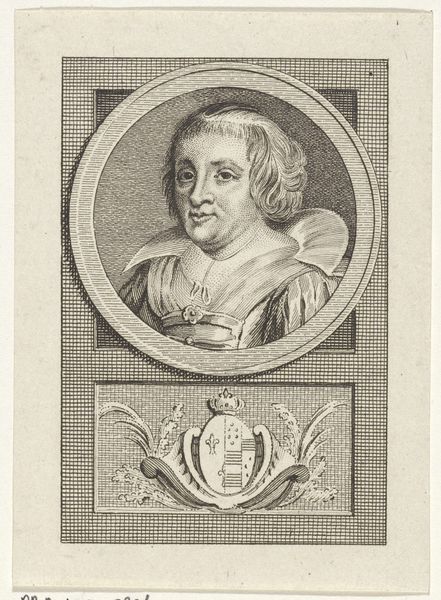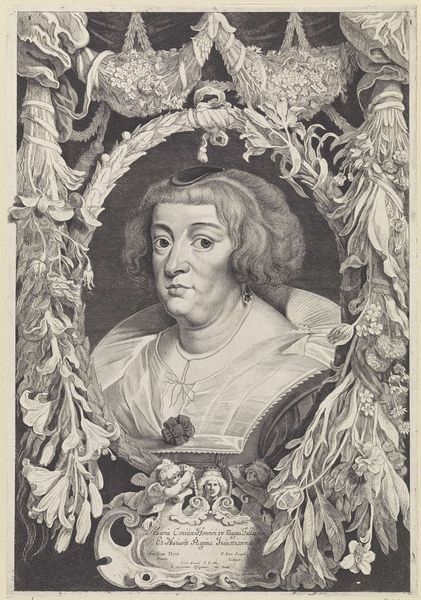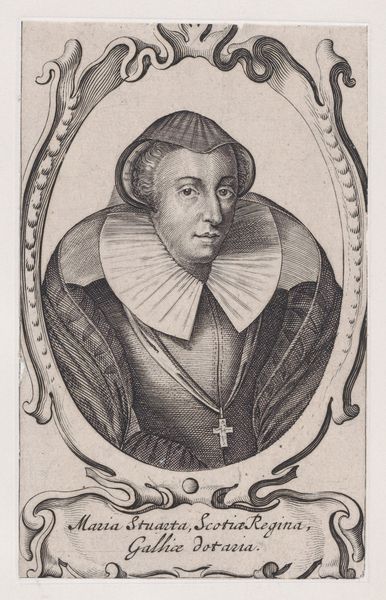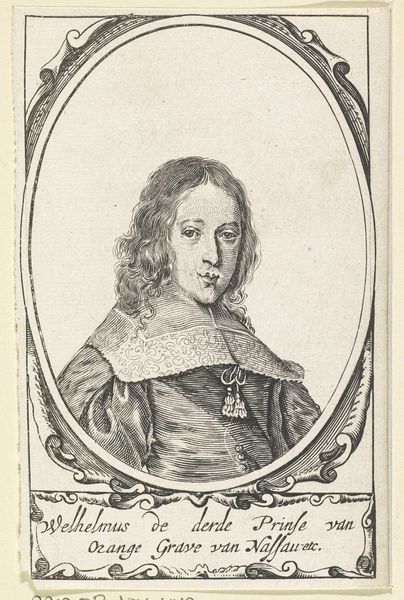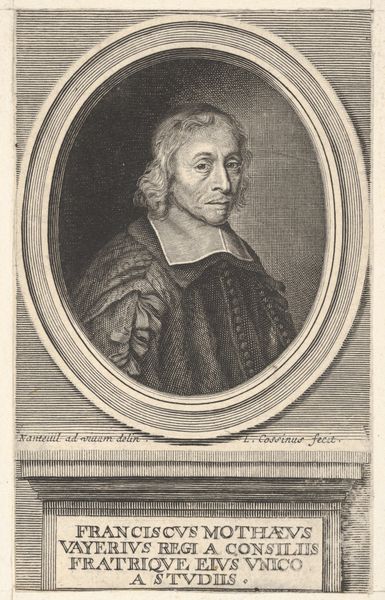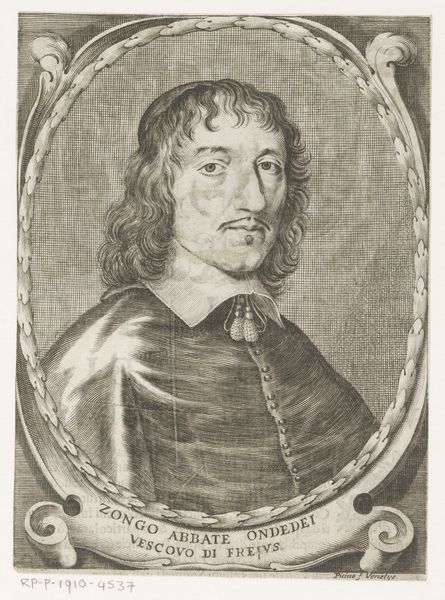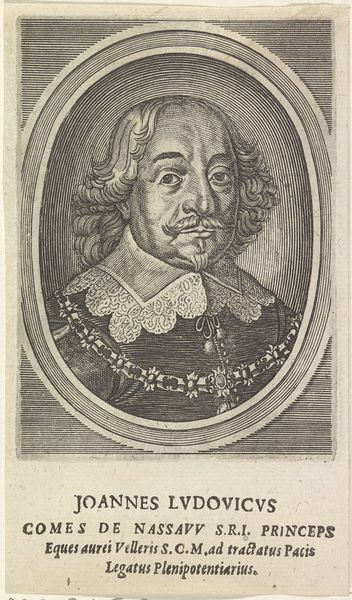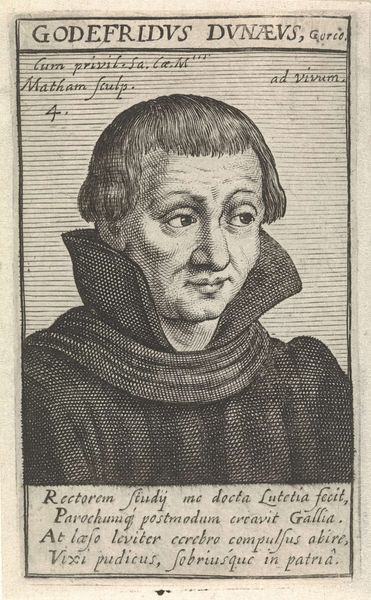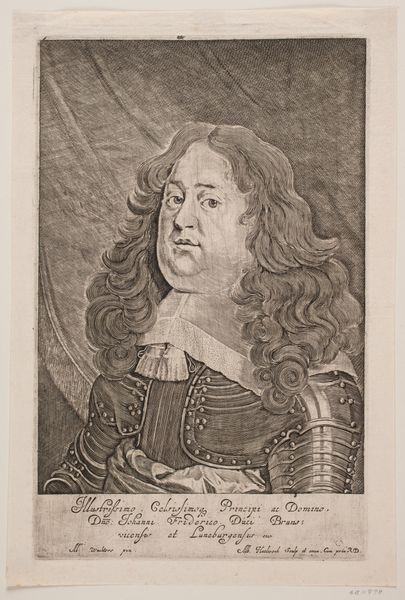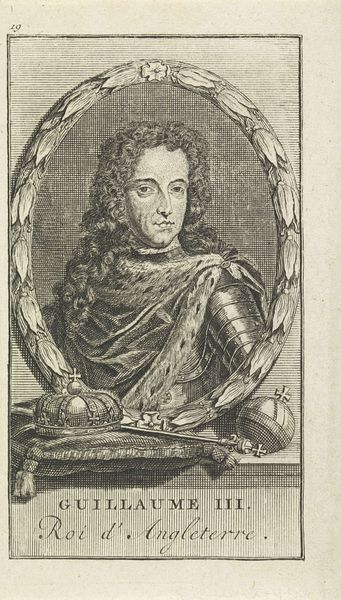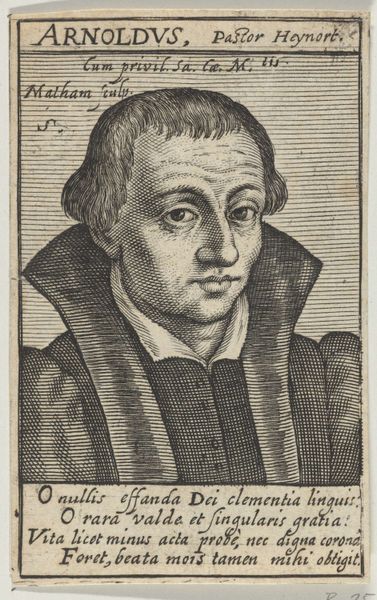
Dimensions: height 70 mm, width 48 mm
Copyright: Rijks Museum: Open Domain
Curator: This print, entitled “Portret van Maria van Reigersberg,” was made by Rienk Jelgerhuis sometime between 1739 and 1806. It’s an engraving, using a stark, almost clinical line. Editor: The first thing that strikes me is how immediate and personal it feels. It's not idealized, is it? The lines aren’t perfect; they seem to embrace a kind of raw honesty in representing this person. Curator: Absolutely, engravings of this period were often more about disseminating information or creating multiple copies of an image, less about conveying intense artistic expression. Think of this not as high art, but rather a repeatable image produced by a craftsman using learned skills and accessible materials. Editor: But that’s precisely what makes it compelling! Engravings often played a vital role in shaping public perception. This portrait would have circulated amongst a specific social sphere. I wonder how this depiction affected Maria's public image and how it reinforced or challenged conventional ideals of femininity within her community? Did it carry political weight, influencing conversations and allegiances in that time? Curator: Well, it's hard to know Maria van Reigersberg's particular social standing. What we do know is that Jelgerhuis was a talented stage actor in addition to his skill with a burin and copper plate. Think about the labor of that – preparing the plate, meticulously incising the lines, the precise inking and printing process… each step demanding skill and precision. Editor: Precisely, this focus also directs us to question access and visibility of different genders at that time. Did she commission it? Who could afford this print? We can view her representation and reception within a power dynamic that speaks volumes of that era. I notice the subject’s lips in a slight smirk, which has intriguing psychological undertones to me... does this give us clues as to how the person behind the image might engage her contemporary world? Curator: I like the direction you’re heading. Considering the broader social factors, we are provided with valuable historical material. The piece exists, was reproducible, was distributed. The raw data here serves us best when taken with other contextual factors of the artist’s place of production, workshop, economics, etc. Editor: Right! And focusing our attention to the politics behind portraiture, we now might recognize that we must analyze art with attention to intersectional ideas—for it is always interconnected within wider political and ideological discourses. Curator: That approach certainly opens a broader scope into how this print can be read, not just as a face on paper but as part of a greater system of making, representation, and visibility. Editor: Indeed. Thank you, this piece offered some wonderful insights.
Comments
No comments
Be the first to comment and join the conversation on the ultimate creative platform.

